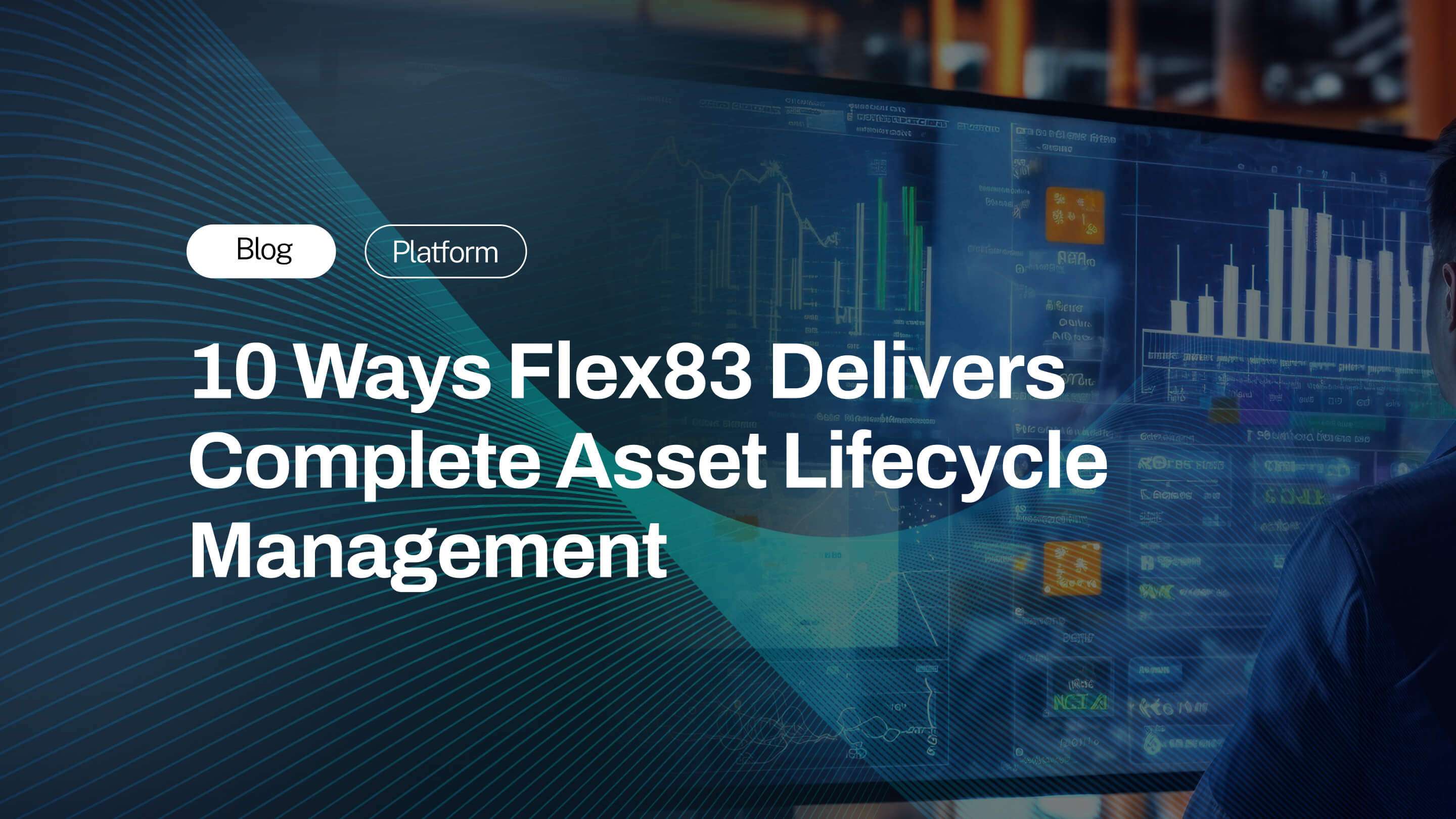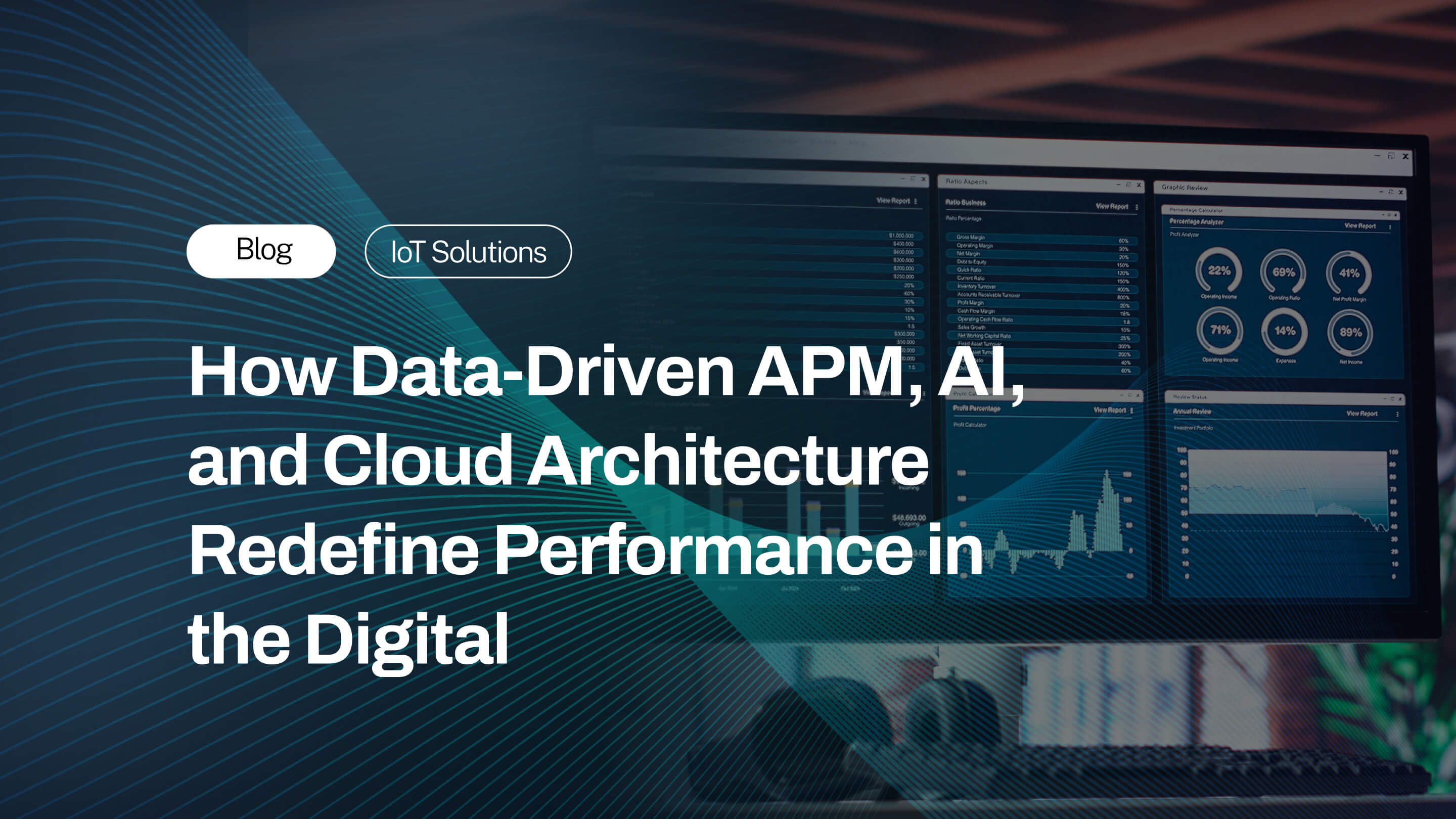Have you ever imagined about your machines talking, your assets learning from each failure, and maintenance teams no longer scramble to fix problems after the fact—instead, occurring issues are anticipated and prevented.
Welcome to the world of data analytics in Asset Performance Management (APM).
Businesses now tap into a trillion-dollar opportunity by moving from lagging, reactive maintenance to a proactive, data-powered model that maximizes uptime, extends equipment lifespan, and transforms operational efficiency.
Introduction: The Data-Driven Revolution in Asset Management
The machinery running assembly lines, pumping energy across grids, and electric vehicle chargers on roads form the backbone of modern economy. Yet, for decades, their management was often little more than guesswork—treating symptoms after breakdowns, or hoping that "if it isn’t broken, don’t fix it" would suffice. Well, with time, that has all been changing faster than ever. With AIoT platforms enabling asset performance management solutions, the future can now be predicted, and anomalies can be prevented.
Today, asset-intensive industries—from manufacturing to energy and transportation —are unlocking significant value with data analytics in Asset Performance Management.
What’s the urgency?
Unplanned downtime costs trillions each year, and aging infrastructure threatens safety and profitability. Data-driven approaches offer not just cost savings and efficiency gains, but also a chance to reimagine how assets are managed for sustainability, resilience, and growth.
Understanding Asset Performance Management (APM) in the Digital Age
So, what exactly is Asset Performance Management? Think of it as the smart orchestration of data, technology, and human expertise to keep assets healthy, productive, and reliable. Modern Asset Performance Management stretches far beyond old-school, time-based maintenance. It’s now a spectrum:
- Reactive: Fix when it breaks.
- Preventive: Routine checks & replacements by a calendar schedule.
- Predictive: Use data and analytics to intervene before things fail.
The most forward-thinking organizations go a step further, using real-time insights, predictive models, and digital twins to optimize every asset decision. Key performance indicators (KPIs) in this era shift from “percent downtime” to “mean time between failures (MTBF),” “asset health index (AHI),” and ultimately, “return on asset (ROA)”.
The Technology Stack: Building Blocks of Smart Asset Management
1. IoT Sensors and Edge Computing
At the heart of advanced Asset Performance Management is data—lots of data. Modern organizations deploy thousands of sensors on their equipment and even infrastructure. Enterprises have data coming from various systems such as CRM, ERP, etc. The data flows in real time, goes to the cloud platforms and is analyzed for signs of trouble or inefficiency.
Deciding between edge and cloud processing depends on delay tolerance, security, and cost. Edge computing allows instant action on local data (important for safety-critical assets), while cloud analytics powers broader pattern recognition and centralized insight gathering.
2. Artificial Intelligence and Machine Learning
AI and ML transform this torrent of sensor data into actionable intelligence. With pattern recognition and anomaly detection, algorithms flag deviations long before human perception would spot an issue. Over time, self-learning systems adapt to equipment behaviour, plant environments, and even weather or usage cycles.
From algorithms just predicting "when will this equipment fail?"—to now suggesting "how can we run this asset longer while using less energy?" or "what intervention will maximize fleet performance at minimum cost?", the asset management journey has come a long way.
3. Digital Twin Technology
Digital twins are virtual replicas of physical assets—everything from a jet engine to an entire wind farm. They ingest real-time and historical data, simulating physical conditions, predicting outcomes, and testing "what-if" scenarios. A digital twin can reveal how a wind turbine might behave under storm stress or how a substation would react if a breaker tripped—all without physical intervention.
These digital twins are rapidly becoming must-haves for asset-intensive industries, enabling scenario planning, operator training, and risk assessment. They also serve as bridges between engineering, maintenance, and finance teams, facilitating smarter, cross-functional decisions.
Data Analytics Framework for Asset Performance
A modern Asset Performance Management analytics pipeline moves from descriptive analytics to prescriptive analytics. Here are the involved four steps:
1. Descriptive Analytics: What happened?
Sensors and data logs provide a full picture of each asset’s health, documenting performance, faults, and maintenance history. This stage often produces dashboards and reports for plant operators or asset managers.
2. Diagnostic Analytics: Why did it happen?
Root cause analysis uses advanced data mining to identify failure patterns and correlations. For example: Finding why did a pump wear out early, or why did a temperature spike precede multiple failures? Having an idea of these issues helps in smarter interventions, finally better decisions.
3. Predictive Analytics: What will happen?
In predictive analytics, the machine learning models forecast the probability of upcoming failures—down to individual critical parts. Predictive maintenance becomes real: replacing bearings or recalibrating equipment precisely when needed, not too late or too soon.
4. Prescriptive Analytics: What should we do?
The system recommends, or even automates, decisions like maintenance scheduling, resource allocation, or part purchasing based on risk, opportunity, and business impact. Some organizations now use “closed loop or feedback control” systems to kick off work orders automatically when leading indicators reach a threshold.
Implementation Strategies and Best Practices
Launching a data-driven asset performance program can be daunting, but successful organizations follow a deliberate roadmap:
- They start small. They do a pilot with one asset class or facility—gain buy-in and prove value before scaling up.
- They focus on data quality and invest in cleaning, normalizing, and integrating siloed asset info (often from legacy or SCADA systems).
- A successful APM strategy needs interoperable systems, and they do this from day zero. They use open protocols and platforms that can flex as requirements evolve—think long-term.
- They build teams who are equipped with digital literacy and analytics skills.
Industry Applications and Real-World Success Stories
1. Manufacturing: Smart Factories and Production Optimization
A leading auto-parts factory deployed IoT sensors on stamping machines, feeding data to a cloud analytics platform.
Result? Early detection of motor vibration issues, 15% drop in unplanned downtime, and a 10% boost in overall equipment effectiveness (OEE).
2. Energy and Utilities: Grid Management and Renewables
Digital twins map entire city grids—asset-by-asset—helping utilities model outage impacts and optimize repair crews. Northumbrian Water uses twins to simulate pipe failures virtually, helping address aging infrastructure with limited manpower and access.
Wind farms deploy thousands of sensor-equipped turbines, using analytics and digital twins to predict blade fatigue, optimize cleaning schedules, and forecast energy output. Some operators report 20% increases in asset lifespan plus millions in avoided repair costs.
3. Transportation: Fleet Management and Infrastructure
Airlines leverage connected sensors to monitor jet engine performance mid-flight, using predictive models to flag early degradation. Fleet managers apply similar models for trucks, railcars, or ships—minimizing breakdowns en route and optimizing maintenance rotations.
4. Healthcare: Equipment and Facilities
Major hospitals use analytics to predict MRI or CT scanner failures, shifting maintenance from “call in the vendor” to “replace this part at night, before patient appointments start.” Facility teams use digital twins to optimize energy use and catch HVAC problems before they disrupt critical care.
How will a Data-backed APM Help Your Business
The global APM market reached $23.75 billion in 2024 and is projected to double to $47.18 billion by 2030, a strong 12.2% CAGR. In some scenarios, organizations have reported:
- 20% increase in critical equipment lifespan using IoT predictive maintenance. (Grand View Research)
- 55.8% of market share for cloud-based APM solutions—cloud’s popularity is no fluke.
- Major cost reductions: Fewer breakdowns, less wasted labor, smarter parts inventory.
- Environmental benefits: Optimized maintenance means lower energy use, less waste, and improved sustainability metrics.
Organizations who are acting on data fastest are responding proactively to opportunities and threats in asset performance.
The Possible Challenges and Solutions
Of course, digital transformation isn’t all smooth sailing. Common hurdles include:
- Data Integration: Merging sensor, enterprise, and legacy asset data is complex but critical for insight generation.
- Cybersecurity: More connected assets mean new attack surfaces—APM systems must prioritize protection.
- Initial Cost: Sensors, IoT upgrades, hiring analytics talent—these pay off, but require upfront budget and patience.
- Skills Gap: Upskilling maintenance and engineering staff is essential to harness these new capabilities.
But what separate the leaders from the laggards is the approach. Forward-thinking organizations treat these not as deal-breakers, but as reasons to build cross-disciplinary teams, invest in training, and select flexible, future-ready technology partners.
Future Trends and Emerging Technologies
What’s next for APM and asset analytics?
- Autonomous Maintenance: AI-driven systems will increasingly detect, diagnose, and sometimes even repair equipment with minimal human intervention.
- 5G Connectivity: Ultra-fast, reliable wireless will unlock higher-frequency data and enable new edge analytics models for remote sites.
- Quantum Computing: While early, quantum algorithms may unlock game-changing optimization for fleets, grids, and factories.
- Sustainability Focus: Analytics increasingly drive not just reliability, but emissions reduction, ESG compliance, and resource optimization.
Getting Started: Your Roadmap to Data-Driven Asset Management
Ready to embrace the future of asset management? Here’s a quick checklist:
- Assess Readiness: Audit existing data sources, asset maturity, and digital skill levels.
- Select Partners: Choose technology vendors with a proven record and future alignment.
- Build a Case: Quantify downtime costs, energy waste, and replacement spending—use these to justify investment.
- Capture Quick Wins: Pilot a priority use case, celebrate results, then scale the model.
- Invest for the Long Haul: Data-driven asset management is a journey, not a sprint—adapt as technology and see your business evolve.
Conclusion: The Imperative for Digital Transformation
The evidence couldn’t be clearer than what it is today. Data analytics has redefined what’s possible in asset performance management. Whether optimizing uptime in a smart factory, maximizing ROI on wind turbines, or having a unified view of your business processes, modern Asset Performance Management delivers measurable benefits. As technology matures, smart organizations will continue pushing the envelope with AI, digital twins, and autonomous systems—unlocking new levels of efficiency, sustainability, and competitive edge.
Asset management is no longer just about “keeping the lights on”—it’s about unlocking the true, data-driven potential of every asset, every day.


.jpg)





%20(1).jpg)

